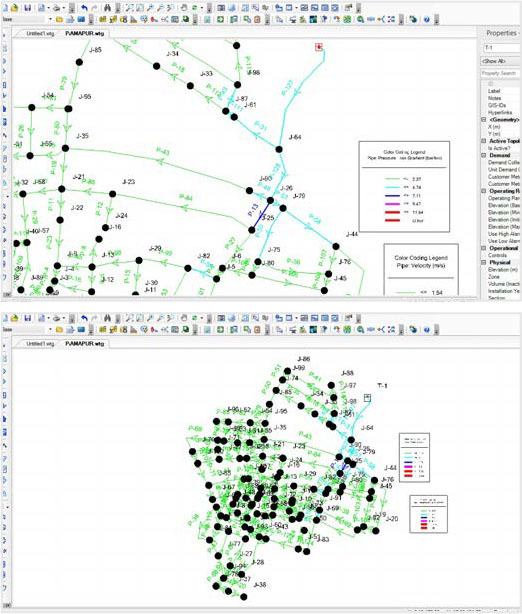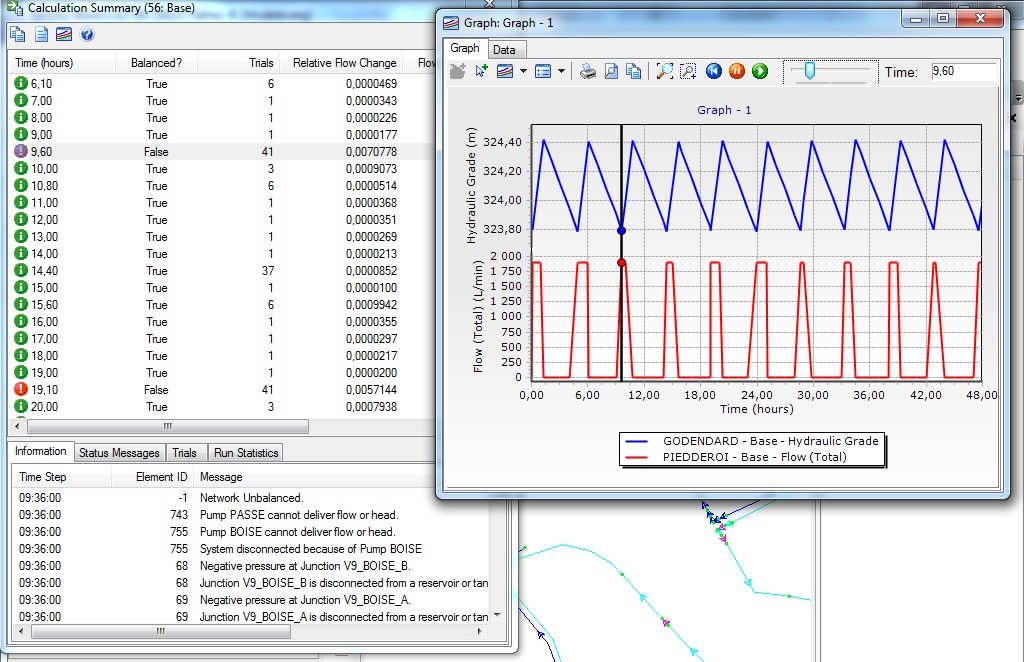
Today, engineers and consultants use EPANET to design and size new water infrastructure, retrofit existing aging infrastructure, optimize operations of tanks and pumps, reduce energy usage, investigate water quality problems, and prepare for emergencies. It was developed as a tool for understanding the movement and fate of drinking water constituents within distribution systems, and can be used for many different types of applications in distribution systems analysis.
#HOW TO MAKE YOUR PRESSURE BALLACE IN WATER CAD SOFTWARE#
EPA and its employees do not endorse commercial products, services, or enterprises.ĮPANET is a software application used throughout the world to model water distribution systems. If you are experiencing any of the symptoms of low blood pressure, please contact one of our expert cardiologists and we can help you craft a plan to avoid future issues.Disclaimer: Any mention of trade names, manufacturers, or products does not imply an endorsement by EPA. If you have normal blood pressure, you should still try to get it checked at least once every year or two. Maintaining normal blood pressure is so important to the health of your heart and arteries, and it’s important to stay on top of your levels so you can make appropriate changes before health problems occur. Try to have a glass of water after each alcoholic beverage in order to avoid dehydration. Easy On The AlcoholĪmong its many negative health effects, drinking alcohol dehydrates you, which lowers your blood pressure by reducing your blood volume. Even if you’re not reducing the overall amount that you’re eating, having smaller meals throughout the day is healthier for both your digestion and blood flow. This is particularly a problem for breakfast-skippers and intermittent fasters – skipping meals can frequently lead to over-eating later to compensate. When you eat a large meal, it takes your body a lot more energy to digest it, which can send your blood pressure plunging. A low-carb diet has been shown in some studies to help with off-setting hypotension, especially in older adults. This can lead to sudden drops in blood pressure. Cut Back On Carbsįoods that are high in carbohydrates, particularly processed carbs, tend to digest very quickly relative to other foods. A folate deficiency can have many of the same symptoms as a Vitamin B12 deficiency, causing anemia which leads to lowered blood pressure. Fill Up On Folateįolate (also known as Vitamin B9) is another essential vitamin found in foods such as asparagus, broccoli, liver, and legumes such as lentils and chickpeas. Foods that are rich in vitamin B12 include eggs, chicken, fish like salmon and tuna, and low-fat dairy products. Lack of this important vitamin can result in anemia, which lowers blood pressure and can result in excessive bleeding as well as organ and nerve damage. Vitamin B12 performs a critical role in helping the body produce healthy red blood cells.

If you’re a regular coffee drinker, you may also develop a higher tolerance for its effects on the vascular system. This effect is usually short-term, and caffeine intake does not affect everybody’s blood pressure the same way. Drink Caffeineīeverages like coffee and caffeinated tea cause an increase in heart rate and a temporary spike in blood pressure.

You can also add table salt or sea salt to your meals, depending on your preference. Good sources of salt include olives, cottage cheese, and canned soup or tuna. Eat Salty Foodsįoods with high salt content can elevate your blood pressure. Your water intake should be higher in hot weather or while exercising. Most doctors recommend drinking at least two liters (roughly eight glasses) of water every day. When you’re dehydrated, your blood volume is reduced, which causes your blood pressure to decrease. Here’s What To Eat To Help Raise Low Blood Pressure: Drink Plenty of Fluids

Here are eight diet tips that might help raise your blood pressure back up to a healthy level. What you eat also has a notable impact on your heart health and blood pressure. Low blood pressure can be caused by a variety of factors, including medication side effects and conditions like diabetes. If left untreated, low blood pressure can result in a heart attack or stroke, causing long-term damage to the heart and brain, or even death.

Symptoms include fainting, blurred vision, dizziness, and lightheadedness. Between 10% and 20% of Americans over the age of 65 have hypotension to some degree. This condition affects many people, particularly as they grow older. Low Blood Pressure (also known as Hypotension) is typically considered to be a blood pressure reading under 90/60 mm Hg. Many people wonder what to eat to help raise low blood pressure.


 0 kommentar(er)
0 kommentar(er)
